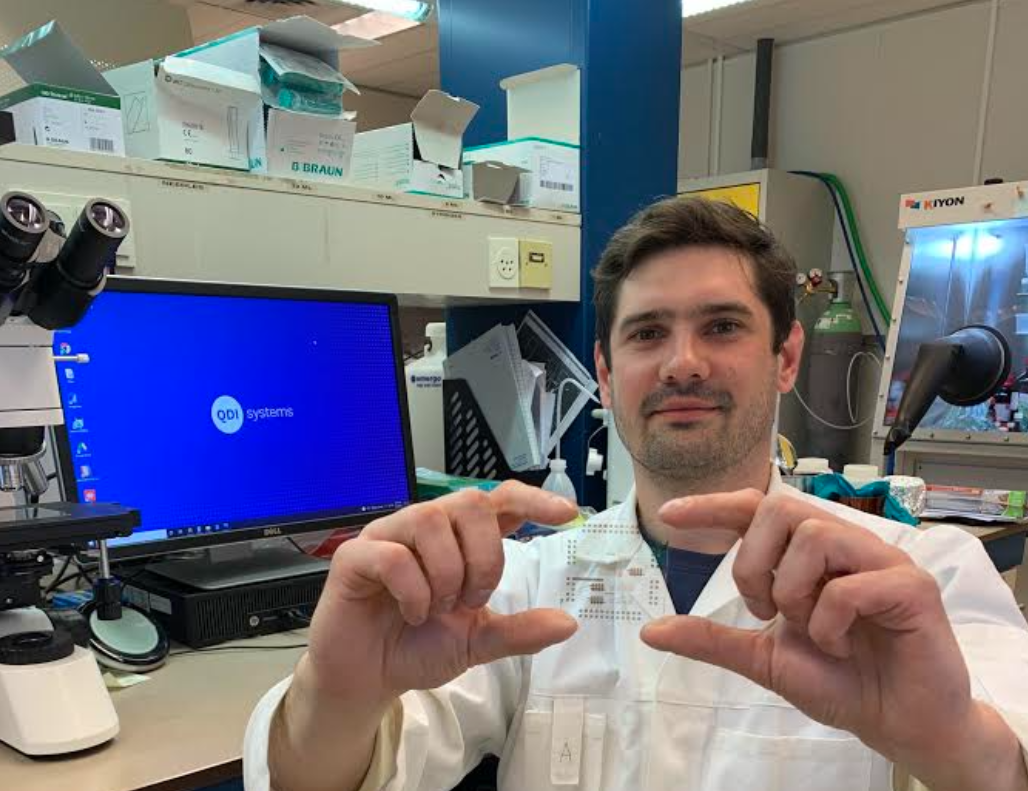
Whether it’s for breast cancer screening or a bone fracture, X-rays provide insight into the condition of the body, which makes them an essential part of healthcare. But X-rays are harmful if you are exposed to them too often and for too long. The Dutch start-up QDI from Groningen is working on an alternative. This involves so-called quantum dots which provide razor-sharp images that require less radiation.
Innovations are already happening in the X-ray market. For example, NXP makes special chips that sharpen images. But the application of quantum dots in healthcare is new. These dots, made out of lead sulfide, are already widely used in physics experiments, but appear to be ideal for use in hospitals as well because they can absorb X-rays. This allows the sensor in the X-ray machine to take sharper images while minimizing the use of harmful radiation.
“With X-rays, it’s often a trade off between a good quality image and the lowest possible dose the patient is exposed to,” says CEO and founder Artem Shulga. “For example, one technique on the market makes clear images, but is incredibly expensive. Another technique is cheaper, but is in turn more harmful to the patient. We are still in the research phase but have already built a number of sensors that work based on this technique. The results from the lab so far show that our technique outperforms current, traditional techniques.”
Breast cancer screening
Shulga will be the first to use the new technique for breast cancer screening. In a mammogram, X-rays are taken of the breast to screen for breast cancer. The photo shows connective tissue, fatty tissue and glandular tissue and of the breast. A mammogram therefore gives a first impression of any abnormalities.
“This particular application involves a specific type of x-ray, where you use specialized equipment,” Shulga explains. “This equipment is able to take pictures of the breast at very high resolutions. This is because doctors need to be able to see all the details in the breasts that they can do a thorough examination. We can facilitate that without using a lot of radiation. So, this is where the future of our technology lies. We are currently developing a sensor with the same degree of resolution, but smaller in size. Hopefully we will soon manage to partner up with a large manufacturing company and launch our sensor on the market.”
Networks
Founded in Groningen, a program for innovative entrepreneurs, start-ups and scale-ups in the city and province of Groningen, has already played an important role in finding partners and investors so far. “They put us in touch with the RFO and we went along to the “Slush!” event in Helsinki last December. It was a great opportunity to network, talk to other founders and lots of investors. Also, Founded in Groningen put us in touch with a lot of investors who are interested in QDI to help take the technology to the next level.”

Even more uses
The sensor could eventually be used for other medical applications. For example, by dentists, to be able to take sharper images of teeth, but with a lower radiation dose. X-rays are an essential part of the treatment plan and give the dentist insight into the condition of the teeth and gums. However, the application is not limited to healthcare. “We can also eventually put our sensor to use in the field of security, for example. The sky is the limit.”
Improving the technology
For Shulga, the development of the product cannot go fast enough. “We simply don’t have enough hours in the day to be able to do everything we would like to do.” At present, the technical team is made up of four people. “Working in a small team is nice and efficient, but the fifth will hopefully join soon, because we still have plenty of ideas to work out.”
For one thing, the technology still needs to be improved before the start-up can enter the market. “To make our product suitable for industry, for instance, we still need to improve things where leaks are concerned. These can affect the image. And we also need to make sure that there are no delays in the images.”
The technology of QDI will be further developed this year. “And we hope to conduct tests in ‘real-life’ conditions next year.”


